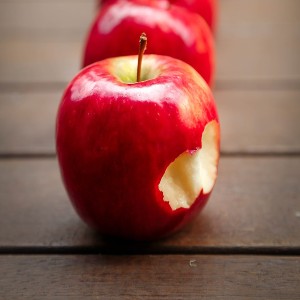Antimicrobial effect of hydro-alcoholic extract of apple with and without zinc oxide nanoparticles on Streptococcus Mutans

Accepted: 10 August 2023
HTML: 7
All claims expressed in this article are solely those of the authors and do not necessarily represent those of their affiliated organizations, or those of the publisher, the editors and the reviewers. Any product that may be evaluated in this article or claim that may be made by its manufacturer is not guaranteed or endorsed by the publisher.
Authors
This study aimed to evaluate the antimicrobial effect of hydro-alcoholic extract of apple (Malus domestica Borkh. Vs.golab, with and without ZnO nanoparticles) on Streptococcus Mutans bacterium compared to 0.2% Chlorhexidine, Persica and suspension of ZnO nanoparticles. Study samples were examined in the groups of apple hydro-alcoholic extract with and without addition of ZnO nanoparticles, a positive control group (Chlorhexidine 0.2%, Persica and suspension of ZnO nanoparticles), and a negative control group (distilled water). In this experiment, a concentration of 500 PPM of ZnO nanoparticles with a diameter of 0.4 nm was used. Agar diffusion method was used to determine the Minimum Inhibitory Concentration (MIC) of apple hydro-alcoholic extract with and without adding ZnO nanoparticles. The concentrations used were 200, 100, 50 and 25 mg/ml. ANOVA statistical test was used to compare the average in the study groups. According to our results, hydro-alcoholic extract of apples alone had no effect on the target bacteria in any of the concentrations. In the group of apple hydro-alcoholic extract with ZnO nanoparticles, the mean inhibition zone was 13 mm at a concentration of 25 mg/ml. 0.2% Chlorhexidine, Persica and suspension of ZnO nanoparticles was observed with the mean inhibition zone of 20 mm, 16 mm and 15 mm, respectively. Hydro-alcoholic extract of apple with addition of ZnO nanoparticles in concentration of 25mg/ml, had growth inhibitory effect on Streptococcus Mutans, but it was not remarkably efficient in comparison with Chlorhexidine.
How to Cite

This work is licensed under a Creative Commons Attribution-NonCommercial 4.0 International License.
PAGEPress has chosen to apply the Creative Commons Attribution NonCommercial 4.0 International License (CC BY-NC 4.0) to all manuscripts to be published.

 https://doi.org/10.4081/ejtm.2023.11623
https://doi.org/10.4081/ejtm.2023.11623



